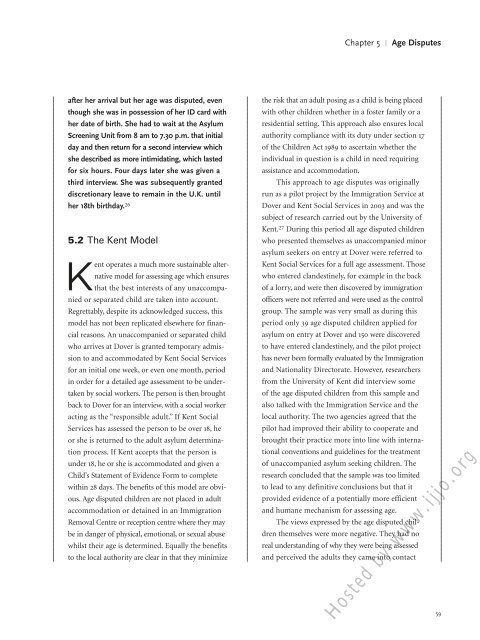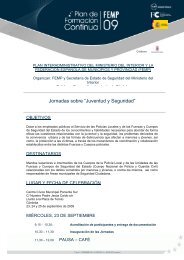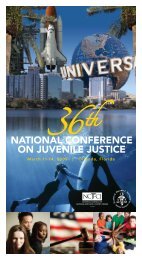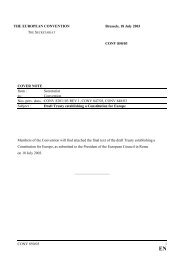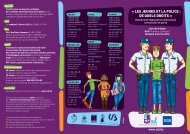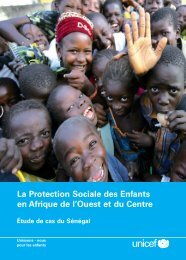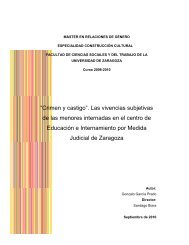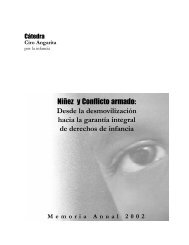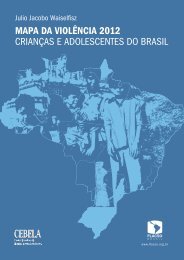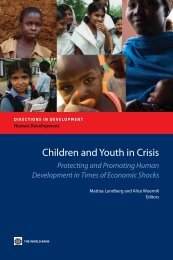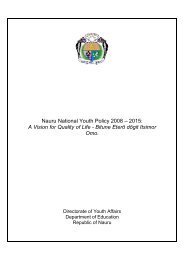Hosted by www.ijjo.org
Hosted by www.ijjo.org
Hosted by www.ijjo.org
Create successful ePaper yourself
Turn your PDF publications into a flip-book with our unique Google optimized e-Paper software.
Chapter 5 | Age Disputes<br />
after her arrival but her age was disputed, even<br />
though she was in possession of her ID card with<br />
her date of birth. She had to wait at the Asylum<br />
Screening Unit from 8 am to 7.30 p.m. that initial<br />
day and then return for a second interview which<br />
she described as more intimidating, which lasted<br />
for six hours. Four days later she was given a<br />
third interview. She was subsequently granted<br />
discretionary leave to remain in the U.K. until<br />
her 18th birthday. 26<br />
5.2 The Kent Model<br />
Kent operates a much more sustainable alternative<br />
model for assessing age which ensures<br />
that the best interests of any unaccompanied<br />
or separated child are taken into account.<br />
Regrettably, despite its acknowledged success, this<br />
model has not been replicated elsewhere for financial<br />
reasons. An unaccompanied or separated child<br />
who arrives at Dover is granted temporary admission<br />
to and accommodated <strong>by</strong> Kent Social Services<br />
for an initial one week, or even one month, period<br />
in order for a detailed age assessment to be undertaken<br />
<strong>by</strong> social workers. The person is then brought<br />
back to Dover for an interview, with a social worker<br />
acting as the “responsible adult.” If Kent Social<br />
Services has assessed the person to be over 18, he<br />
or she is returned to the adult asylum determination<br />
process. If Kent accepts that the person is<br />
under 18, he or she is accommodated and given a<br />
Child’s Statement of Evidence Form to complete<br />
within 28 days. The benefits of this model are obvious.<br />
Age disputed children are not placed in adult<br />
accommodation or detained in an Immigration<br />
Removal Centre or reception centre where they may<br />
be in danger of physical, emotional, or sexual abuse<br />
whilst their age is determined. Equally the benefits<br />
to the local authority are clear in that they minimize<br />
the risk that an adult posing as a child is being placed<br />
with other children whether in a foster family or a<br />
residential setting. This approach also ensures local<br />
authority compliance with its duty under section 17<br />
of the Children Act 1989 to ascertain whether the<br />
individual in question is a child in need requiring<br />
assistance and accommodation.<br />
This approach to age disputes was originally<br />
run as a pilot project <strong>by</strong> the Immigration Service at<br />
Dover and Kent Social Services in 2003 and was the<br />
subject of research carried out <strong>by</strong> the University of<br />
Kent. 27 During this period all age disputed children<br />
who presented themselves as unaccompanied minor<br />
asylum seekers on entry at Dover were referred to<br />
Kent Social Services for a full age assessment. Those<br />
who entered clandestinely, for example in the back<br />
of a lorry, and were then discovered <strong>by</strong> immigration<br />
officers were not referred and were used as the control<br />
group. The sample was very small as during this<br />
period only 39 age disputed children applied for<br />
asylum on entry at Dover and 150 were discovered<br />
to have entered clandestinely, and the pilot project<br />
has never been formally evaluated <strong>by</strong> the Immigration<br />
and Nationality Directorate. However, researchers<br />
from the University of Kent did interview some<br />
of the age disputed children from this sample and<br />
also talked with the Immigration Service and the<br />
local authority. The two agencies agreed that the<br />
pilot had improved their ability to cooperate and<br />
brought their practice more into line with international<br />
conventions and guidelines for the treatment<br />
of unaccompanied asylum seeking children. The<br />
research concluded that the sample was too limited<br />
to lead to any definitive conclusions but that it<br />
provided evidence of a potentially more efficient<br />
and humane mechanism for assessing age.<br />
The views expressed <strong>by</strong> the age disputed children<br />
themselves were more negative. They had no<br />
real understanding of why they were being assessed<br />
and perceived the adults they came into contact<br />
<strong>Hosted</strong> <strong>by</strong> <strong>www</strong>.<strong>ijjo</strong>.<strong>org</strong><br />
59


